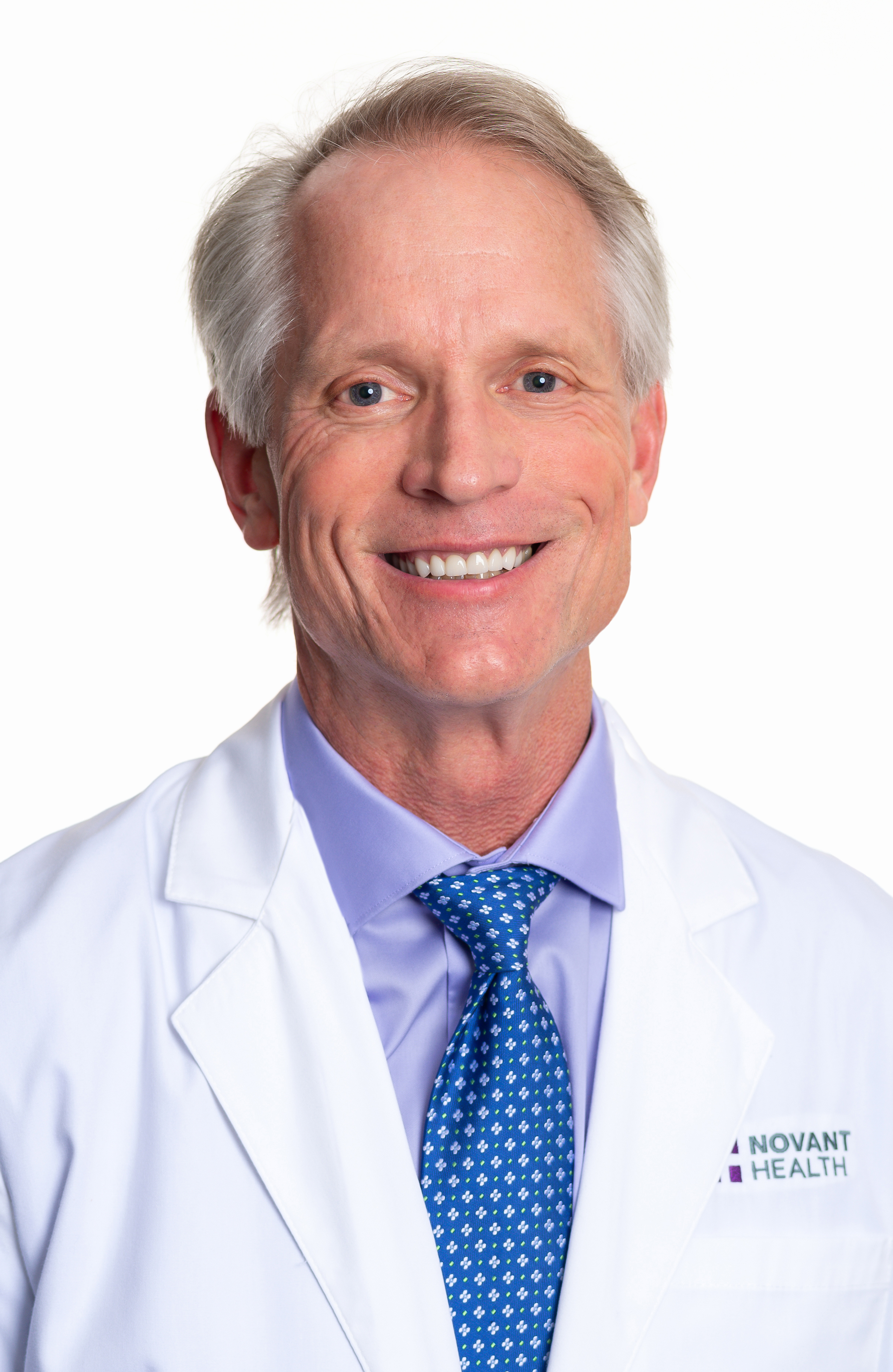
For the estimated 15 million women in the U.S. who endure the symptoms of uterine fibroids, like painful and prolonged periods, Dr. Timothy Chase of Novant Health Glen Meade OB-GYN in Wilmington has a message: “You don’t have to suffer unnecessarily with these problems.”
Fibroids, non-cancerous growths inside the uterus, are the most common cause of hysterectomy surgery, or removal of the uterus. Fibroids account for as many as half of the 600,000 hysterectomies performed in the United States each year.
But, Chase said, with newer and less invasive surgeries available, women with fibroids can lose the painful symptoms while avoiding traditional hysterectomy surgery. They have a quick recovery, getting back on their feet in just a few days.
Two minimally invasive outpatient procedures, Acessa and Sonata, use radiofrequency ablation (RFA) to treat fibroids. The fibroid cell tissues die when they are heated, causing the fibroids to shrivel and shrink, then eventually be harmlessly absorbed by the healthy surrounding tissues. Most women experience the most symptom improvement within three months and continued improvement for the first year.
Doctors offering the Acessa or Sonata RFA fibroid treatment procedure:
Charlotte-
Dr. Stephanie Barbadora-Froelich, Novant Health Providence OB/GYN - Providence
Dr. James Bohmer, Novant Health Minimally Invasive GYN Surgery - SouthPark
Dr. Tiffani Jones, Novant Health Providence OB/GYN - Providence
Dr. Gregory Reynolds, Novant Health Bradford Clinic OB/GYN - Matthews
Dr. Scott Schneider, Novant Health Minimally Invasive GYN Surgery - SouthPark
Dr. Hillary Robinowitz-Elins, Novant Health Harbor Pointe OB/GYN – Huntersville or Langtree
Dr. Jessica Van Kooten, Novant Health Harbor Pointe OB/GYN - Huntersville, Langtree or Denver
Wilmington-
Winston-Salem-
Dr. Joseph Barker, Novant Health WomanCare - Winston-Salem
Dr. Brianna Dix, Novant Health WomanCare - Winston-Salem
Dr. Haley Landwehr, Novant Health WomanCare – Clemmons and Winston-Salem
Dr. A.J. Lewis, Novant Health Valaoras & Lewis OB/GYN
Dr. Melissa Meyer, Novant Health WomanCare - Winston-Salem
Dr. Natalie Rochester, Novant Health WomanCare - Kernersville and Winston-Salem
Dr. Kayla Smith, Novant Health WomanCare - Winston-Salem
Dr. Edward Rives, Novant Health WomanCare - Winston-Salem
Dr. Jaleema Speaks, Novant Health WomanCare - Kernersville and Winston-Salem
Dr. Joseph Stringfellow - Novant Health City Lake OB/GYN - Thomasville
Dr. Darian LaNeave - Novant Health City Lake OB/GYN - Thomasville
Dr. Erica Horn - Novant Health City Lake OB/GYN - Thomasville
Dr. Meaghan Aalto- Novant Health City Lake OB/GYN - Lexington
Wondering if an RFA procedure is the right move for treating your fibroids? Your Novant Health OB-GYN can help address any questions you have.
In the meantime, here are answers to five common questions to help get your conversation started.
1. How common are uterine fibroids and what are their symptoms?
Fibroids are a very frequently occurring condition, with as many as 80% of U.S. women experiencing fibroids by the time they are 50. They are different from cancerous tumors and do not typically lead to cancer.
Fibroids can cause a range of uncomfortable symptoms, including:
2. What are the advantages of RFA?
RFA is a targeted procedure, so it destroys only the fibroids, while preserving healthy tissue surrounding them. It is an outpatient procedure, meaning you don’t have to stay overnight in the hospital. The average RFA surgery takes around 90 to 120 minutes, depending on the location and number of fibroids.

Dr. Hillary Robinowitz-Elins completes the Acessa RFA procedure at Novant Health Huntersville Medical Center for patients of Novant Health Harbor Pointe OB/GYN – Poplar Tent in north Charlotte. She said it’s effective at treating the two most common types of fibroids – intramural (within muscle of the uterus), and subserosal (right under the “skin” of the uterus). Acessa can also be combined with hysteroscopic myomectomy, called Myosure, for submucosal fibroids (fibroids pushing into or already in the uterine cavity).
“Acessa provides more access as well as safer access to fibroids,” she said. “We also are avoiding painful uterine incisions, injury to normal uterine tissue, and avoiding a difficult recovery from traditional myomectomy.”
Top scores for safety in NC
Novant Health just received the most ‘As’ for patient safety in North Carolina from The Leapfrog Group. With a focus on safety, quality and patient experience, the national, industry-leading nonprofit, evaluates and assigns letter grades ranging from A to F to hospitals across the country. Novant Health’s hospitals with “A” grades outperform 70% of hospitals nationwide for safety and quality.
3. What is the difference between the Acessa and Sonata RFA procedures?
- Acessa is completed laparoscopically, which is sometimes known as a keyhole or Band-Aid surgery. The surgeon makes three tiny incisions in the abdomen, each one about 1/4-inch, to insert a camera, an ultrasound and the Acessa handpiece.
The laparoscopic ultrasound and guidance mapping technology provide detailed imaging. Chase called this technique “a great breakthrough because it’s as close as you can get to the uterus,” allowing him to locate fibroids in different locations and even find fibroids that may have been missed with a previous MRI.
Sonata is completed without any incisions. It uses an RFA treatment device that includes an ultrasound on the tip. The surgeon passes the Sonata treatment device through the vagina and into the uterus.
- Both procedures use ultrasound waves to locate the fibroids, and radiofrequency energy to destroy the fibroid tissue.
Acessa and Sonata are both highly effective procedures. Some results by numbers:
- In a clinical study of women who received the Acessa procedure, 82% of women had lighter periods and 94% were satisfied with the procedure after 12 months.
- In a clinical study of women who received the Sonata procedure, 95% had lighter periods and 97% were satisfied with the procedure after 12 months.
4. How much time off should I plan for my RFA procedure?
For most women, an RFA procedure entails two to four hours at outpatient surgery. After Acessa, most women resume normal activities in three to five days. Combined with Myosure, the recovery period remains an average three to five days. After Sonata, most women resume normal activities in two to three days. For either RFA procedure, you should plan to have someone drive you to and from the surgery, and you should avoid operating a vehicle or any strenuous activities for 24 hours because of anesthesia you will receive.
5. How do I know if I’m a good candidate for RFA?
“Everybody’s different, and everybody’s fibroids are different,” Chase said. He recommends asking your Novant Health gynecologist about the procedure. Your clinician will help you decide if you are a good candidate for RFA, which will involve a pelvic exam, an ultrasound and sometimes an MRI. You’ll have an in-depth discussion about what you can expect from the procedure and together you and your physician can decide if RFA is the right decision for you.
Have symptoms and wondering if you might have fibroids? Caring OB-GYNs are just a click away.









